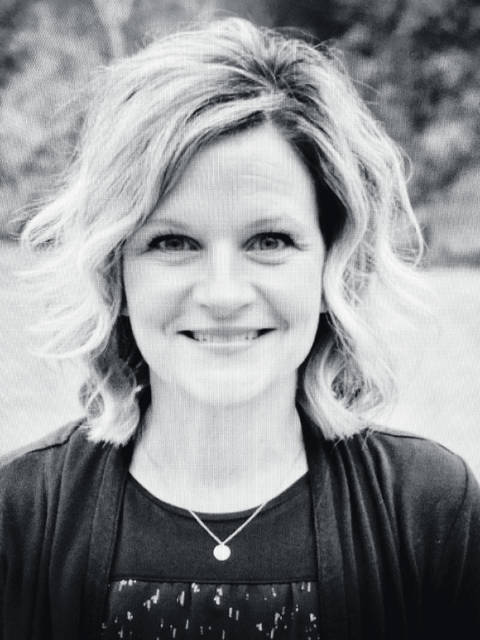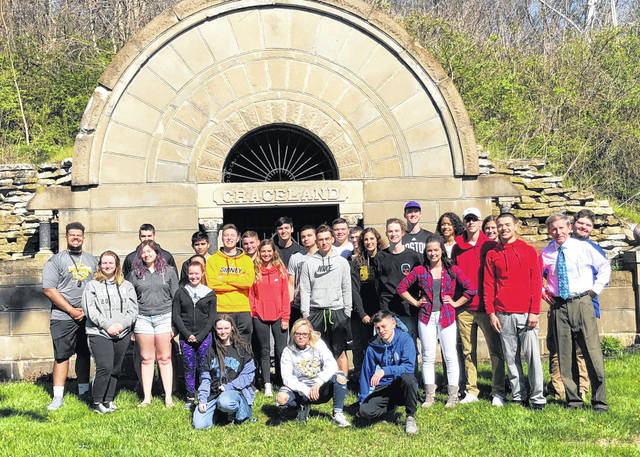

SIDNEY — For seven weeks readers of Sidney Daily News have explored what students in my English class at Sidney High School learned about legacy through their research and work with the Shelby County Historical Society. Most of the seniors in my classes have spent their whole lives in this town. While many identify with the Big Four Bridge, Tawawa Park and the structure of downtown, they did not know much about the people who helped shape our community.
They had not read the stories of German immigrants who came to work on the canals, but ended up starting local businesses. They were unaware of how men like Wendell Whip, James Humphrey and Herb Schlater changed not only the landscape, but the attitudes of residents toward a commitment to community. They had not discovered how women like Julia Lamb and Ida Haslup Goode lived such full lives and left such indelible imprints on our town. They didn’t know anything about the Randolph Slaves. Truth be told, neither did I.
I have 23 years experience teaching high school English, almost 20 of those years at Sidney High School. Curriculum has shifted in the last few decades. English class is no longer a study of Shakespeare, Hemingway and diagramming sentences. While we still read some fiction, the primary focus of senior year is researching, thinking, and writing.
My goal each year is to help students maneuver through difficult texts and find their own voices as writers. I am always looking for new vehicles to help them develop their own voices. In February 2018 I met with representatives of the Shelby County Historical Society and pitched the idea of a local research project designed to help students explore the concept of legacy.
Rich Wallace, Tilda Phlipot, Julie Gilardi, Faye Spangler and Jane Bailey were enthusiastic and willing to help from day one. They generated a list of about 50 people for students to consider. After a few days of preliminary research, students made their selections.
That was when the real work started.
Each student studied the life of a former resident. They read old documents, spent time in the archives of the historical society website, read obituaries, and some even visited living relatives. The research culminated in a field trip to Graceland Cemetery to visit the graves of the residents that students had spent weeks getting to know. Once the research phase ended, students were tasked with writing an article that not only highlighted the resident’s life, but explained the legacy the resident left to our community.
One of products of this work was the summer series: “Learning About Legacy.” I am proud of the series and the articles, but there is even more to celebrate. Spending time learning about our collective past gave students a renewed sense of pride in their hometown. They will never look at the Wagner Building the same way now that they know the story of the man who built it. They now understand that Tawawa Park exists because a few local men had the vision, persistence and charity to purchase the land for all residents to enjoy.
While some students attended a football game downtown as small children, they now realize the selfless contribution Julia Lamb made to provide for a space for children to gather for generations to come. Students developed their own ideas about what it means to leave a legacy. They recognized the power of community building that each of these visionaries had in common. They learned that their town exists, in large part, because of the benevolence of others. The legacies that most inspired students were left by people who cared less about their own wealth and comfort, and more about lifting the community at large.
One thing I know for sure is that there is always more to learn. Each year brings new challenges and rewards. Often the biggest rewards follow a challenge. This project was certainly rewarding, but there were a lot of moving parts. When the Historical Society sent me the list of 50 visionaries, I spotted a familiar name. Herb Schlater was my grandfather. When Taylor Clemons selected his name as a resident to research, I decided not to tell her that he was my grandfather. I didn’t want that to affect her perception or her writing. As she began to draft she decided she wanted to interview a living relative. I brought my dad, Ken Schlater, in for an interview. They talked for over an hour. What a gift it was to read about my grandfather through the eyes of my student, in particular the way she was able to capture his charismatic love for Sidney, Ohio.
Classes will start again soon at Sidney High School. A new crew of seniors will be sitting in my room at the end of this week. Another journey begins. I will continue to work on building a legacy of my own. While it isn’t a park or a company or a new development, it is just as tangible. It is a collection of over 20 years of voices who are out in this world continuing to find their own way. They are using their voices to create legacies of their own. They are making us proud to call Sidney: home.



